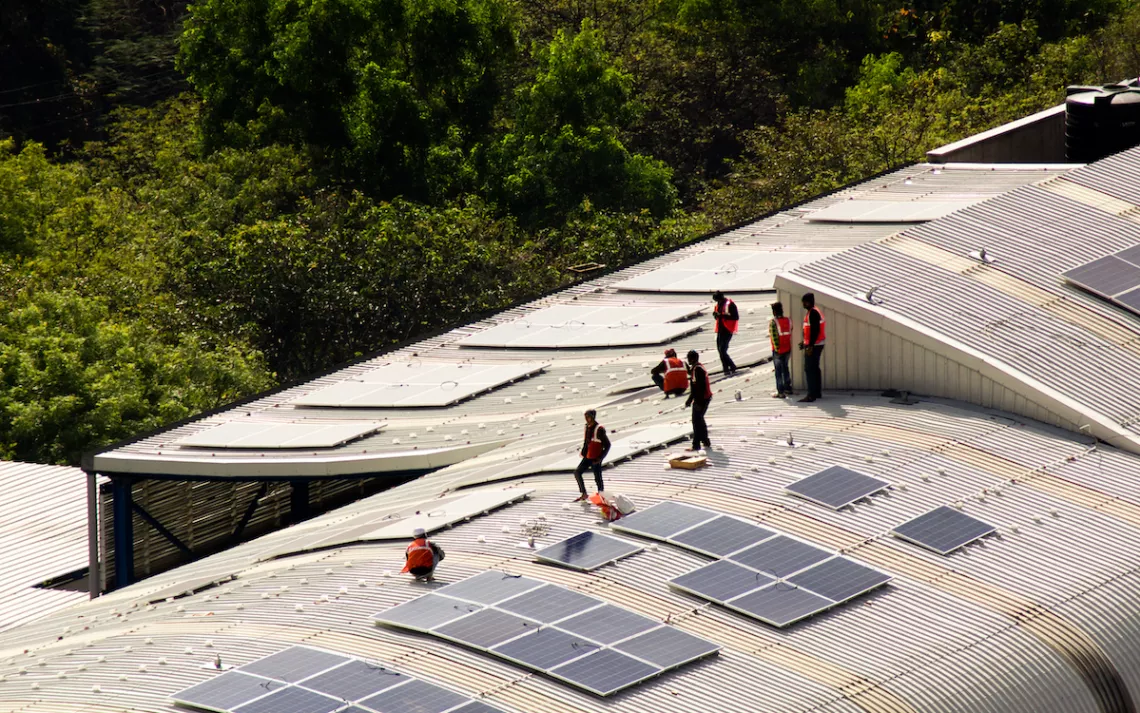India’s Largest Power Company Shifts Away From Coal
Renewables are better for the bottom line, and they’re what people want

Photo by amlanmathur/iStock
On May 3, tropical cyclone Fani hit Orissa, a state on the eastern coast of India. One of the strongest cyclones to make landfall in the region in almost two decades, it killed 35 people and caused the evacuation of more than a million. Government officials have said that property and infrastructure damage, which included 500,000 houses, would take $14 billion to repair. While relief efforts were underway, 16 of India’s 29 states faced intense heat, with daytime temperatures crossing 40ºC (102ºF).
India and many other developing countries are experiencing disproportionate impacts from an increase in frequency and intensity of extreme weather events—including cyclones, floods, droughts, and heatwaves—known to be exacerbated by climate change.
Curbing greenhouse gas emissions while providing energy security and economic prosperity to India’s population—many of whom are still not even connected to the grid—is proving an uphill climb. While its per-capita emissions are only 40 percent of the world average, its emissions grew at a faster rate in 2018—by 4.8 percent—than that of any other major energy-consuming nation. That’s largely because India’s current energy production is still heavily dependent on fossil fuels.
Tomorrow’s energy mix, however, promises to be different. Tata Power, India’s largest integrated power company, has announced that it will not construct any new coal-fired plants. Tata’s shift toward renewable energy mirrors the large-scale transition underway within India’s power sector. Tata’s move is not solely for climate reasons; it's also because coal no longer makes business sense. In India, more than 40 gigawatts (GW) of coal-fired power plants are financially stressed and new additions at a near halt. Peak coal capacity may be closer than anticipated.
India’s goal is to install 275 GW of renewable energy by 2027. By the end of 2018, it was over a quarter of the way to that goal. Renewables deliver wholesale electricity at well below 3 rupees per kilowatt-hour, while the average for thermal coal is closer to Rs3.50/kWh.
A large part of Tata’s thermal capacity is at Mundra, Gujarat, a state on the western coast of India. In the last three financial years, it has consistently reported losses over $110 million; in the first three quarters of 2018/19, those losses reached $191 million. Tata’s plant has also been mired in controversy (see Lakshmi Sarah’s “Coal-Ravaged Indian Fishers Take to the Supreme Court,” in the March/April Sierra).
“Tata invested in a $4 billion, 4 GW stranded asset at Mundra,” says Tim Buckley, a researcher at the Institute for Energy Economics and Financial Analysis (IEEFA). “With the clarity of hindsight, the decision to build a thermal plant reliant on expensive imported coal and the concurrent promise to deliver exceptionally low cost electricity for the next 25 years was entirely flawed and economically unjustified.”
Over time, for example, coal is subject to inflationary pressures and can’t compete with the zero fuel cost of renewables. Since electric utilities in India are under financial distress and in constant need of bailouts, they have no latitude to buy expensive thermal coal when lower-cost renewable energy is available.
According to an analysis by IEEFA, Tata’s plan to pivot to renewable technology and infrastructure will allow it to be more profitable. It stands to gain a lot, as do investors backing renewable projects. “Tata’s renewables business is an Indian leader, and it is delivering acceptable returns to investors,” Buckley says. “It is demonstrating that there is a clear alignment of investor interests with having a sustainable corporate strategy.”
Tata’s move could be a road map for other energy companies around the world, especially those in developing countries. A recent poll by think tank E3G polled citizens in Indonesia, Pakistan, the Philippines, South Africa, Turkey, and Vietnam on their energy preferences; all six leaned toward renewable energy. A sizeable majority also favored foreign investment in support of that clean energy. All that the banks, pension funds, and investors need to do now is listen.
 The Magazine of The Sierra Club
The Magazine of The Sierra Club



